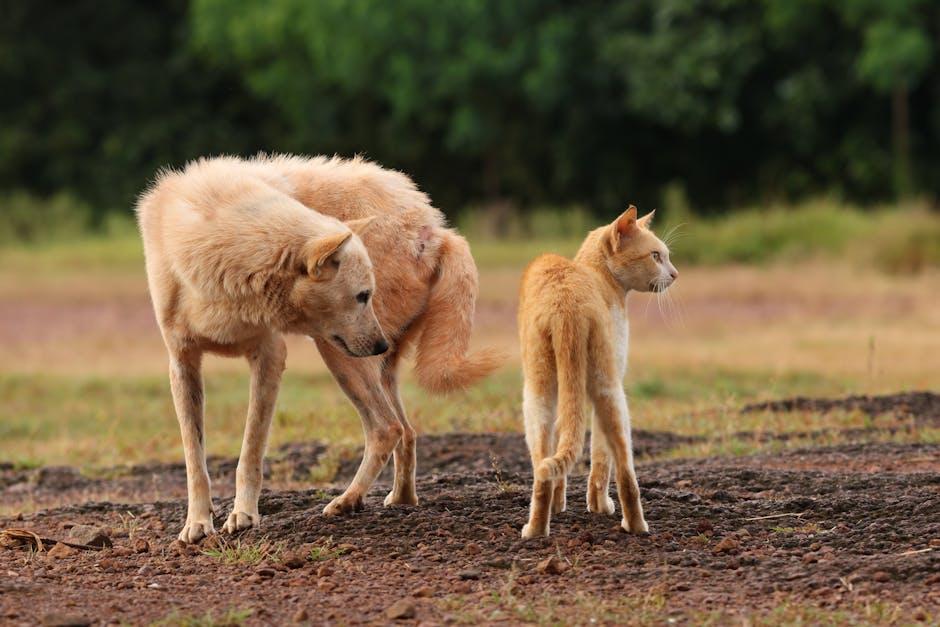Introducing your beloved canine companion to other dogs can be a rewarding experience that enriches their social life and enhances their overall well-being. However, this process requires careful planning and consideration to ensure it is safe and enjoyable for all parties involved. Whether you’re a new dog owner or a seasoned pet parent, understanding the nuances of canine interaction is essential for fostering positive relationships. In this guide, we will explore practical tips and expert advice on how to safely introduce your dog to new furry friends, helping you navigate potential challenges with confidence and ease. With a warm heart and a steady hand, you can open up a world of social opportunities for your dog, building lasting friendships along the way.
Choosing the Right Environment for Dog Introductions
When introducing your dog to new canine friends, selecting an appropriate setting is crucial for a smooth and stress-free experience. Opt for a neutral location where neither dog feels territorial. This could be a local park or an open field, where both dogs can have ample space to explore without feeling confined. Avoid areas with too many distractions, like other dogs or loud noises, which might cause anxiety or overstimulation.
- Spaciousness: Choose a place where both dogs can have their own space and approach each other at their own pace.
- Quiet surroundings: A calm environment helps reduce stress levels and allows for a more controlled interaction.
- Familiar scents: Bringing along items with familiar scents, such as a favorite toy or blanket, can provide comfort and security.
Safety is paramount, so ensure that the location is secure and escape-proof, minimizing the risk of any sudden runaways. By creating a balanced and neutral environment, you’re setting the stage for a positive and lasting canine friendship.

Understanding Canine Body Language and Signals
When introducing your dog to another, it’s essential to become fluent in the silent language they speak. Dogs communicate a myriad of emotions and intentions through their body language, and understanding these signals can help you ensure a safe and positive interaction. Keep an eye on the following cues:
- Relaxed Body: A dog that feels safe and comfortable typically has a relaxed posture, with their tail held naturally, eyes soft, and ears at ease.
- Play Bow: A universal sign of a playful mood, the play bow involves a dog lowering their front legs while keeping their rear in the air. It’s an invitation to fun!
- Wagging Tail: While often associated with happiness, a wagging tail can also indicate excitement or anxiety. Look for other body signals to determine the dog’s overall emotional state.
- Stiff Body: A stiff, tense posture might signal unease or aggression. It’s crucial to intervene if you notice this, as it could lead to a negative encounter.
- Yawning or Lip Licking: Dogs may yawn or lick their lips when they’re stressed or uncertain. It’s their way of calming themselves and others around them.
By observing these signals and responding appropriately, you can facilitate a friendly meeting between your dog and others. Remember, each dog is unique, so learning to read these cues in the context of the individual dog is key to understanding their comfort level and intentions.

Gradual Socialization Techniques for a Positive Experience
Introducing your furry friend to other dogs can be a rewarding experience when approached with care and patience. Begin with controlled environments where both dogs feel secure. A neutral location, like a quiet park or a friend’s backyard, can prevent territorial behaviors. Keep initial interactions brief, gradually increasing the time as comfort levels rise. Pay close attention to body language—tail wagging, relaxed postures, and playful gestures are positive signs.
- Use positive reinforcement: Reward your dog with treats and praise for calm behavior.
- Leash introductions: Start with both dogs on leashes to maintain control, then slowly allow more freedom as they become comfortable.
- Respect boundaries: If either dog shows signs of stress, such as growling or avoiding, give them space and try again later.
Patience and understanding are key. Remember, every dog is unique, and the pace at which they become comfortable with new canine friends will vary. Stay attuned to their needs and celebrate each small success along the way.

Ensuring Safety and Comfort During Dog Interactions
When it comes to introducing your dog to new furry friends, creating a safe and comfortable environment is key to fostering positive interactions. Dogs, much like humans, have their own personalities and comfort levels, which can greatly influence how they respond to new acquaintances. Start in a neutral territory such as a park or open field, where neither dog feels territorial pressure. This helps minimize stress and allows for a more natural meeting. Keep both dogs on a leash, but ensure it’s loose enough to allow them to move around and sniff each other without feeling restricted. Observe their body language closely; a wagging tail, relaxed posture, and playful bows are good signs, while stiff bodies, raised hackles, or growling may indicate tension.
Consider these tips to enhance safety and comfort during dog interactions:
- Stay calm and relaxed, as dogs can pick up on your energy. A confident owner helps create a confident dog.
- Give treats and praise for positive behavior to reinforce a friendly approach.
- Avoid face-to-face meetings initially; side-by-side walks can help them get accustomed to each other’s presence without the pressure of direct confrontation.
- Be ready to intervene if things get too intense. Redirect their attention with a toy or a command if necessary.
Remember, patience and attentiveness are your best tools. Each dog is unique, and some may take longer to warm up to new friends. By providing a secure and comforting atmosphere, you’re setting the stage for a successful and happy introduction.

